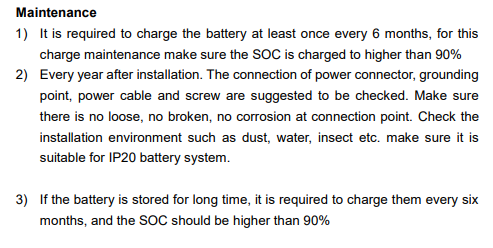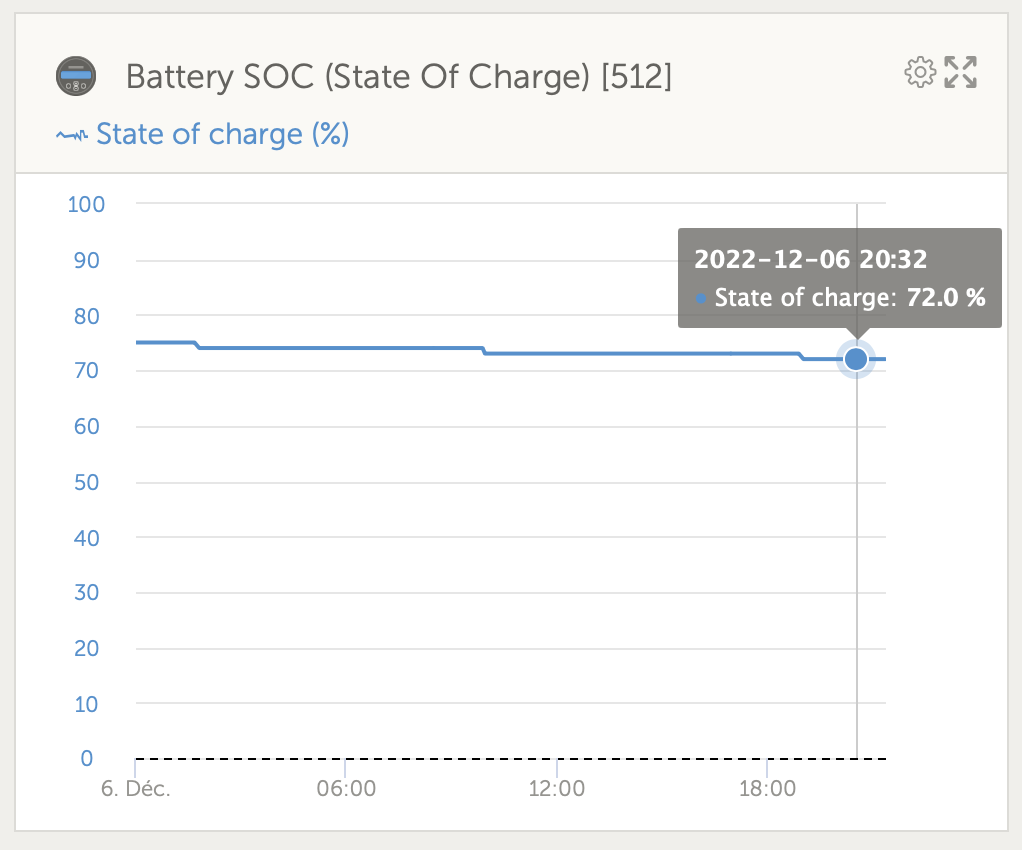I cannot find any information how much energy a Pylontech US2000C needs in standby.
With standby I mean: The battery switch is "ON" and the battery was "started" with the red button. The battery is disconnected to any consumer via battery switch.
Background: The system is installed in a mountain hut. To keep things easy for others I want them to use the battery switch only and not mess with any additional switches in my installation. Sometimes the hut is not used for weeks, even 2 or 3 months maybe.
help very much appreciated. Thanks :)


